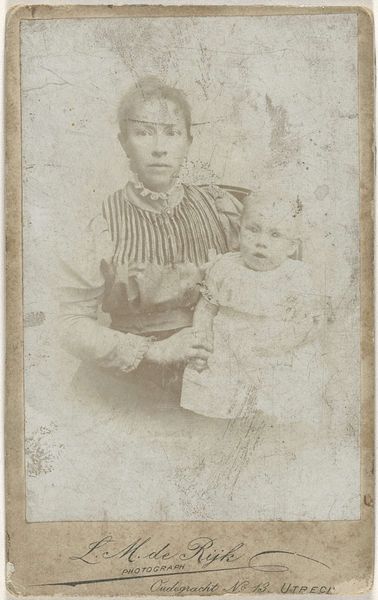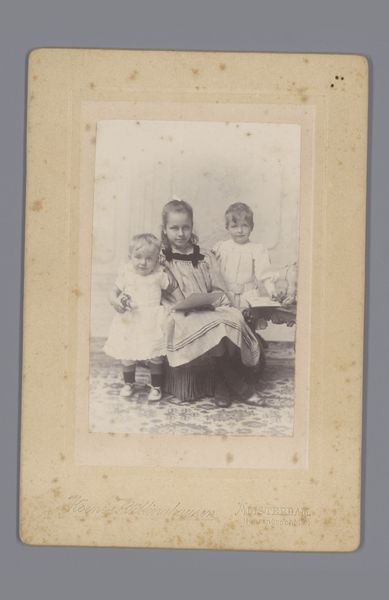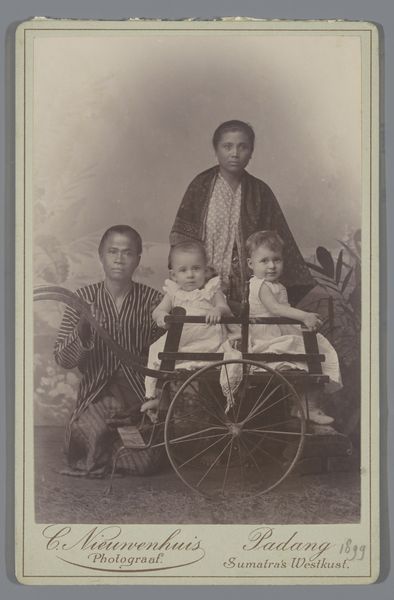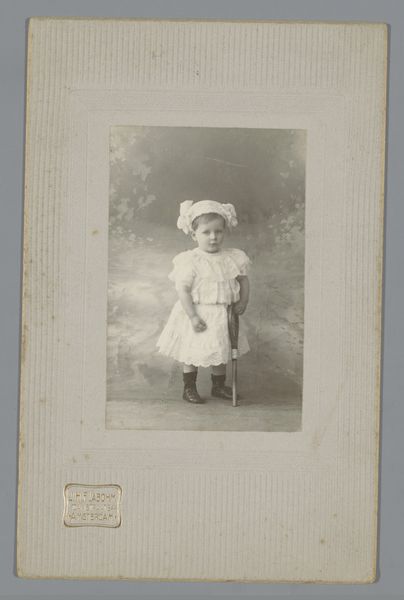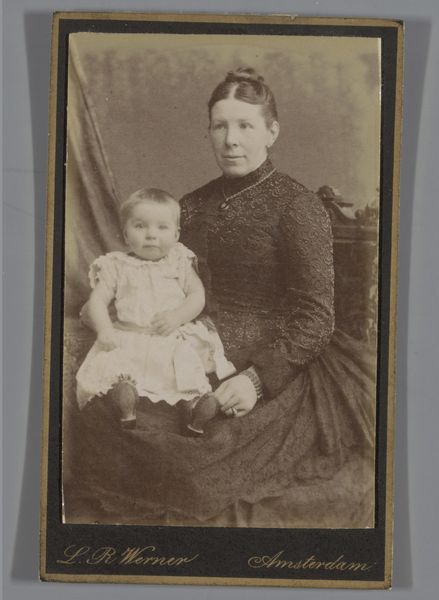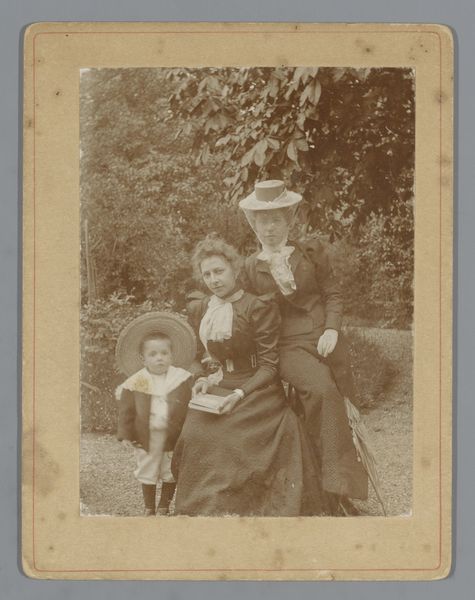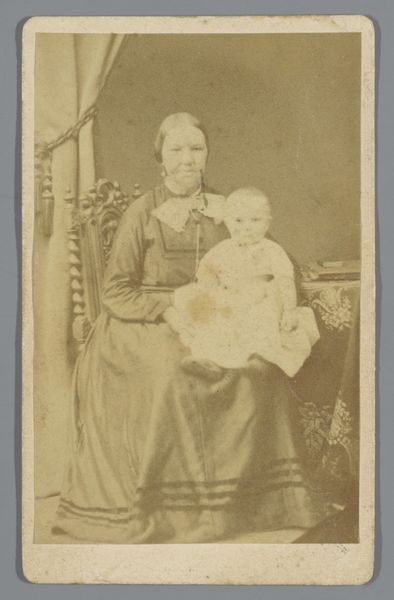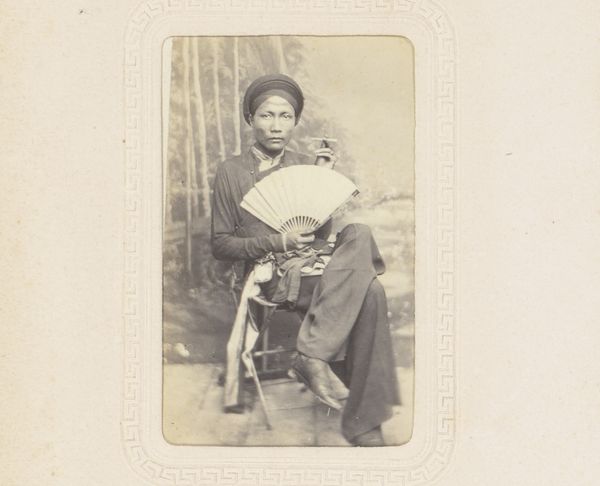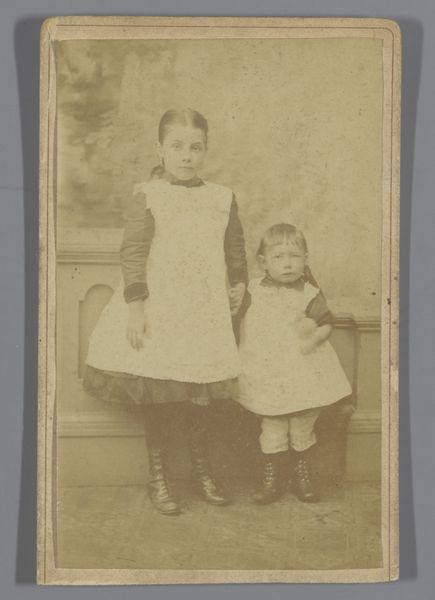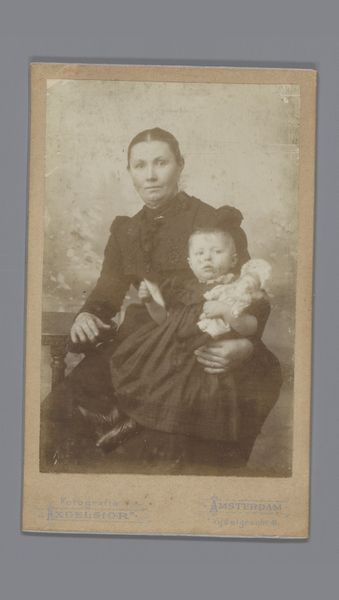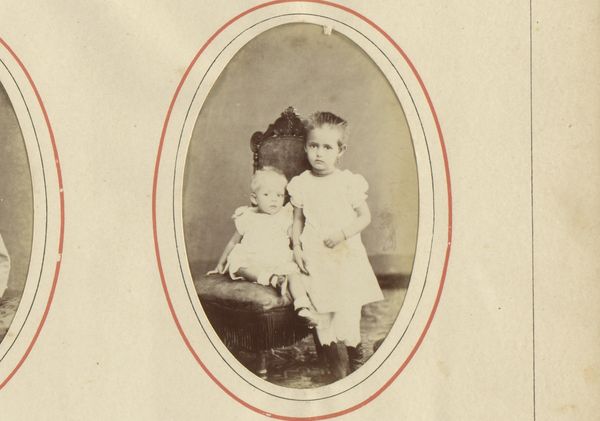
photography, albumen-print
#
portrait
#
16_19th-century
#
mother
#
photography
#
group-portraits
#
genre-painting
#
watercolor
#
albumen-print
Dimensions: height 104 mm, width 60 mm
Copyright: Rijks Museum: Open Domain
Curator: Looking at this rather delicate albumen print by the Hisgen Brothers, dating from around 1877 to 1884, titled "Portrait of an Unknown Woman with Child"... Editor: Oh, she's captivating. Melancholy. The whole scene feels like a faded memory, the sepia tones adding to that wistful air. The child's stare is unsettling, though, almost accusing. Curator: Interesting observation. Albumen prints, you know, involved coating paper with egg white before applying the photographic emulsion. Mass production led to the popularization of cartes de visite, images sold and traded widely. It really speaks to shifts in consumer culture and democratization of image-making in the 19th century. Editor: The materiality adds to the strangeness. Egg whites, light-sensitive chemicals... imagine the process, the alchemical transformations. It feels like a trace of life captured in something almost organic, like preserving a flower in resin. The studio setting feels quite artificial, like a theatrical scene, don't you think? Curator: Indeed. And consider the colonial context. Hisgen Brothers operated a studio in Amsterdam and elsewhere. The racial dynamic here is complex, reflecting historical power imbalances evident in photography's role documenting otherness and social stratifications through commissioned portraiture. It prompts us to ask how studio conventions intersect with broader socioeconomic realities of the time. Editor: Precisely. One can only imagine what thoughts or feelings are behind her opaque, stoic face—how limiting for marginalized people and ethnicities! This resonates very loudly. And what's with the ornamentation in the scene, the chair and lace? All designed to project a sort of respectability. Is the portrait of this anonymous person another projection for Western viewers or clients? Curator: The trappings indicate that even in this era the material conditions—paper quality, elaborate clothing, the very act of sitting for a portrait, suggested a certain status despite historical contexts and biases—all pointing towards understanding art objects in relation to production and consumption and representation across class boundaries. Editor: All making it something beyond just capturing likeness; It is a performance that speaks volumes. In an otherwise mute medium. Curator: Well put. It makes the seemingly simple image worthy of a much more inquisitive regard!
Comments
No comments
Be the first to comment and join the conversation on the ultimate creative platform.
